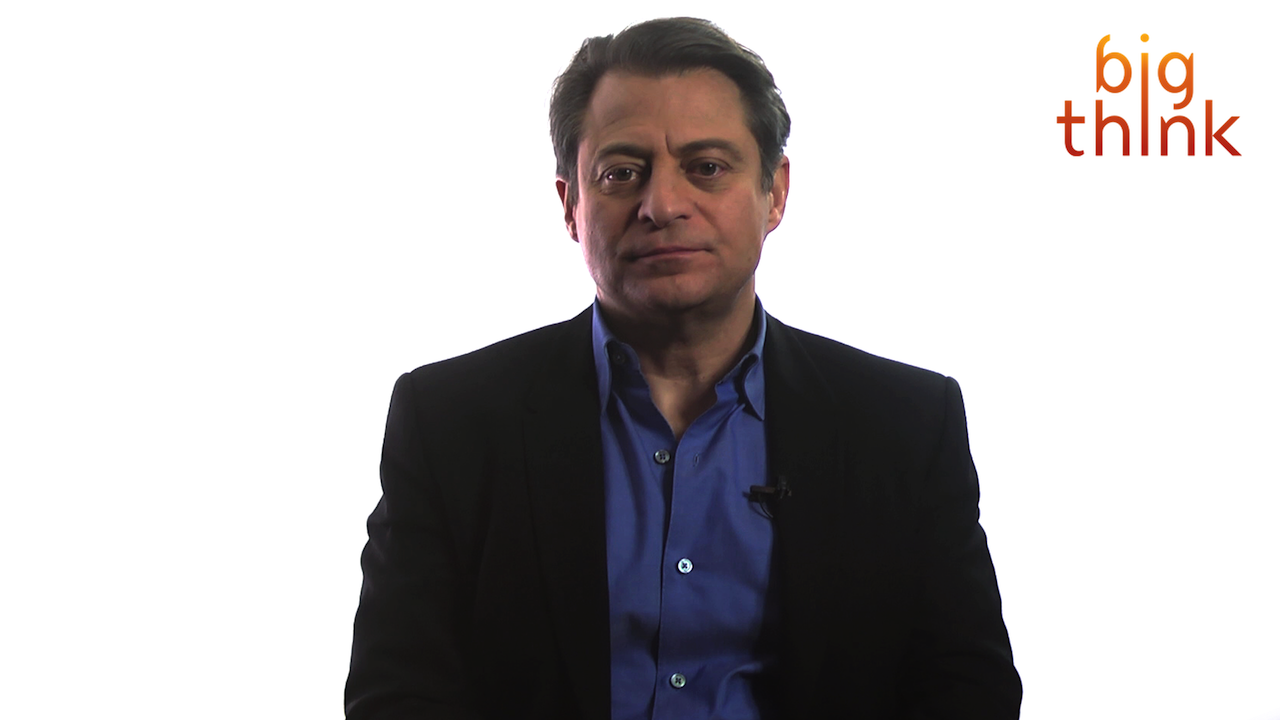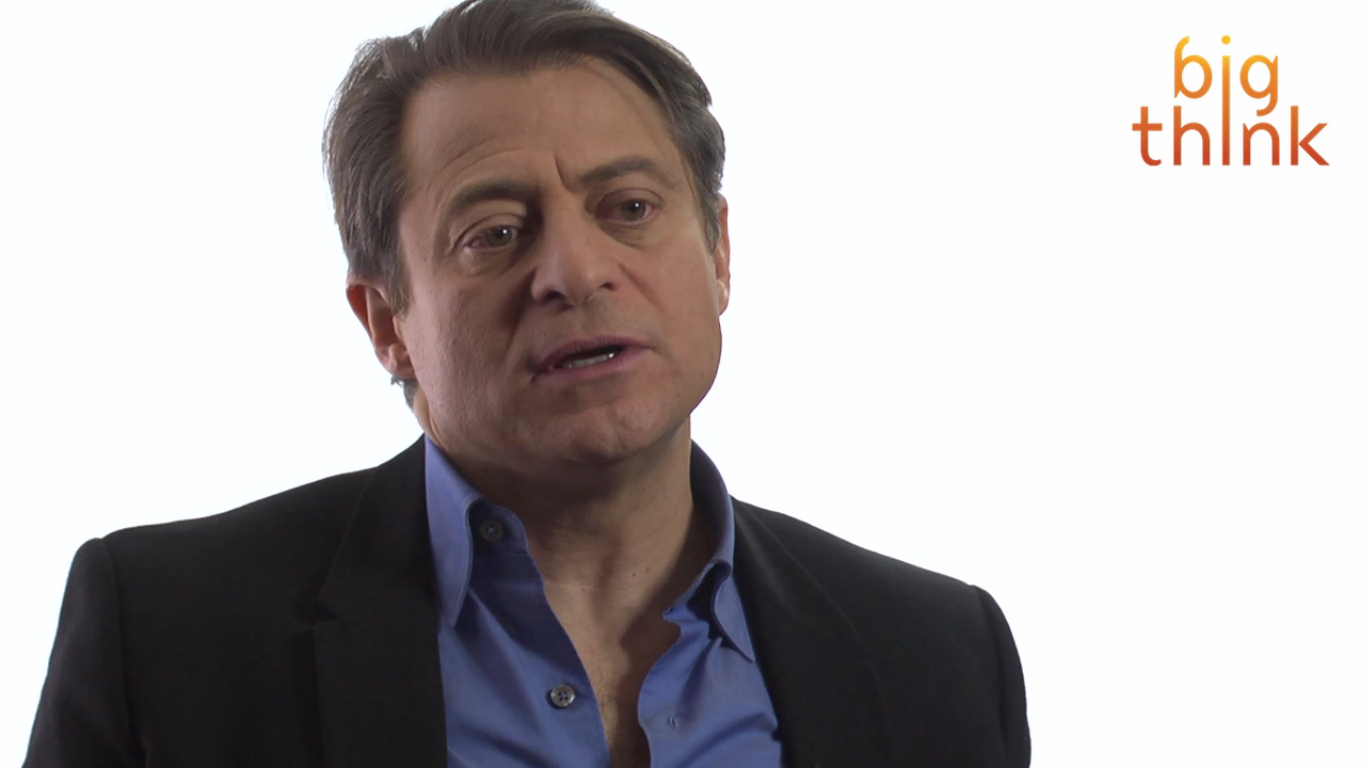Steven Kotler’s Six D’s of Exponential Technology

What makes an exponential entrepreneur? That’s the topic tackled by Flow Genome Project founder Steven Kotler in today’s featured Big Think interview. Kotler is a co-author, along with XPRIZE CEO Peter H. Diamandis, of the book Bold: How to Go Big, Create Wealth and Impact the World, which examines the ambitious tactics and strategies of visionary businessmen such as Larry Page, Elon Musk, Richard Branson, and Jeff Bezos. A lot of what made these men extremely successful in this and recent decades make up the basic tenets of what Kotler calls “exponential entrepreneurship”:
“An exponential entrepreneur is an entrepreneur who is leaning on exponentially accelerating technology — so network sensors, AI, robotics, synthetic biology, 3D printing — these technologies that are all on exponential growth curves. They’re also relying on what we call exponential psychological tools. These are ways to think at scale, flow states, things along those lines. Things that let entrepreneurs to scale up their mental game like never before. And finally they’re also using exponential crowd-power tools. These are crowdsourcing, crowdfunding, centerprises, and community building, right, that let entrepreneurs get access to capital, get access to expertise, really scale up their reach farther than ever before. So an exponential entrepreneur is people who are using these three kind of categories to level up.”
The three stages of exponential entrepreneurship are therefore an adoption of exponentially growing technology, utilization of advanced psychological strategies (such as flow states, a topic Kotler has addressed before on this site), and harnessing of “crowd-power tools” that allow companies to organize and communicate with their target audiences more effectively than ever before. Savvy entrepreneurs take advantage of these 21st-century tools to launch bold, hugely profitable projects. Kotler explains that the key to achieving exponential entrepreneurship is to understand the growth cycles of exponentially advancing technologies. These are broken up into the Six D’s:
Digitalization: “A technology becomes exponential once it becomes digitalized. It becomes represented in ones and zeroes. Once that happens, it becomes an information-based technology and it hops on an exponential growth curve. A classic example being Moore’s laws covering transitions.”
Deception: “These technologies get introduced and it takes a while for them to get up to speed, right. And there’s all this hype in the beginning and they fall into this deceptive period and people kind of dismiss them. 3D printing was in that deceptive period for a very, very long time. Robotics, AI, all these things. But all of the technologies that we’re talking about in Bold are now moving out of that deceptive period.“
Disruption: The technologies then play a role in subverting established industries. “A classic example is Uber. It’s totally disrupting the taxicab industry. Instagram totally disrupting Kodak. These are classic examples of the disruption.”
Demonetization: “For example, once you could store digital images on a camera, film was totally demonetized. And suddenly nobody was buying roll film anymore. Pixels did the same job. So the money comes out of the equation.”
Dematerialization: “Think about all the 1980s or ’90s technology that now come free with your cellphone, right? Peter and I did a calculation in Abundance and we were looking at this and we found the average cellphone houses over like a million dollars’ worth of technologies from the 1980s. You have your GPS locator, your encyclopedia, your radio and record player, your camera, video recorder, on and on and on, right. You can now, with Instagram, get access to editing software that 10 years ago was a $2 million package. And today it’s free with an Instagram account. So demonetization, dematerialization, the technology itself is disappearing. Nobody’s going out and buying cameras anymore because it comes on your smartphone.”
Democratization: “These technologies themselves become cheaper and cheaper and cheaper. Cellphones are a classic example. Back in the ’80s, these were a luxury technology that only the wealthiest could have and then it kind of slowly moved down the scale until where we are today. I mean 50 percent of the world … [is] carrying a supercomputer in their pocket. That’s how much these things have been democratized. Access becomes available to anyone.”
And that’s how you track the life cycle of an exponentially growing technology. Kotler uses smartphones as an example, but there are plenty of other applicable innovations that fit this paradigm. Amazon’s digital-distribution business model went through all these stages up until the point when access to hardly any product you could ever want became available with a swipe of the finger.
Think about what technologies today are currently making their way through the above life cycle. Where are points for growth? Which innovations appear to be headed toward a bright future? Identifying them is key to jumping into the realm of exponential entrepreneurship.





